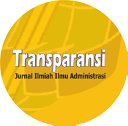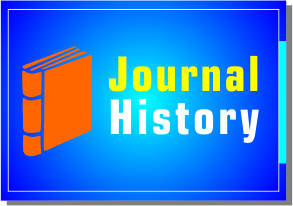Reformasi Administrasi dan Karakter Bangsa : Sebuah Kajian Konseptual
DOI:
https://doi.org/10.31334/trans.v6i2.35Keywords:
Administrative Reforms, National Character, Culture, Transformation ValueAbstract
Administrative reform is basically an administrative process improvements on an ongoing basis. As a process, administrative reform has certain goals to be achieved. On the other hand, the character of the nation's understanding of transformation born of cultural values in society can serve as the foundation for the direction of administrative reform a nation. It's intended as a bridge in understanding the interconnection between both concepts.
References
Aldrich, H.E. 1979. Organizations and Environments. Englewood Cliffs, NJ: Prentice-Hall.
Budimansyah, D., Suryadi, K., 2008. PKn dan Masyarakat Multikultural. Bandung: Sekolah Pascasarjana Program Pendidikan Kewarganegaraan Universitas Pendidikan Indonesia.
Caiden, G. E. 2001. Administrative Reform, in Ali Farazmand, Comparative and Development Public Administration, pp. 665 - 667.
-------. 1991. Administrative Reform Comes of Age. New York: Walter de Gruyter.
-------. 1969. Administrative Reform, Chicago: Aldine.
Carroll, G.R. 1984. “Organizational Ecology.†Annual Review of Sociology, 10: 71–93.
Farazmand, Ali. 2002. Administrative Reform in Developing Nations. USA: Greenwood Publishing Group Inc.
-------. 1994. “Organization Theory: An Overview and Appraisal.†In Ali Farazmand, ed., Modern Organizations: Administrative Theory in Contemporary Society.Westport, CT: Praeger, pp. 1–51.
Hahn-Been, Lee. 1976. Bureaucratic Models and Administrative Reform, in The Management of Change in Government. A. F. Leemans (ed), Martinus Nijhoff. The Hague: Institute of Social Studies.
Hakam, A.K. 2007. Bunga Rampai Pendidikan Nilai. Bandung: Universitas Pendidikan Indonesia.
Imawan, Riswanda, Makna Reformasi: Salah Kaprah. Kedaulatan Rakyat. 22 Juni, 1999, Yogyakarta.
Nasirin, Chairun, 2013. Reformasi Administrasi Publik, Sebuah Kajian Konseptual, Jurnal Ilmiah Administrasi Publik dan Pembangunan, 4 (2): 92-99.
Ndraha, Taliziduhu, 1997. Budaya Organisasi. Jakarta: Rineka Cipta.
Peter, B. Guy, 1994. “Government Reorganization: A Theoretical Analysis.†In Ali Farazmand, ed., Modern Organizations: Administrative Theory in Contemporary Society. Westport, CT: Praeger.
Politt, C., 1984. Manipulating the Machine: Changing the Patterns of Ministerial Departments,1960–83. London: Allen & Unwin.
Samonte, A.G., 1970, ‘Patterns and Trends in Administrative Reform’, in Lee, H-B. and Samonte, A.G., eds, Administrative Reforms in Asia, Manila: EROPA, pp. 287-302.
Yunus, Rasid, 2013. Transformasi Nilai-nilai Budaya Lokal sebagai Upaya Pembangunan Kataklter Bangsa, Penelitian Studi Kasus Budaya Huluya di Kota Gorontalo, Jurnal Penelitian Pendidikan, 4(1): 65-77.
Wallis, M. 1993. Bureaucracy: Its Roles In Third World Development. Hong Kong: Macmillan.
Zauhar, Soesilo. 2007, Reformasi Administrasi: Konsep, Dimensi dan Strategi. Cetakan Ketiga, Jakarta: Bumi Aksara.
Downloads
Published
Issue
Section
License

This work is licensed under a Creative Commons Attribution-ShareAlike 4.0 International License
Please find the rights and licenses in Transparansi : Jurnal Ilmiah Ilmu Administrasi By submitting the article/manuscript of the article, the author(s) agree with this policy. No specific document sign-off is required.
- License
The commercial use of the article will be governed by the Creative Commons Attribution license as currently displayed on Creative Commons Attribution-ShareAlike 4.0 International License.
2. Author(s)' Warranties
The author warrants that the article is original, written by stated author(s), has not been published before, contains no unlawful statements, does not infringe the rights of others, is subject to copyright that is vested exclusively in the author and free of any third party rights, and that any necessary written permissions to quote from other sources have been obtained by the author(s).
3. User Rights
Transparansi : Jurnal Ilmiah Ilmu Administrasi spirit is to disseminate articles published are as free as possible. Under the Creative Commons license, Transparansi : Jurnal Ilmiah Ilmu Administrasi permits users to copy, distribute, display, and perform the work for non-commercial purposes only. Users will also need to attribute authors and Transparansi : Jurnal Ilmiah Ilmu Administrasi on distributing works in the journal and other media of publications.
4. Co-Authorship
If the article was jointly prepared by more than one author, any authors submitting the manuscript warrants that he/she has been authorized by all co-authors to be agreed on this copyright and license notice (agreement) on their behalf, and agrees to inform his/her co-authors of the terms of this policy. Transparansi : Jurnal Ilmiah Ilmu Administrasi will not be held liable for anything that may arise due to the author(s) internal dispute. Transparansi : Jurnal Ilmiah Ilmu Administrasi will only communicate with the corresponding author.
5. Miscellaneous
Transparansi : Jurnal Ilmiah Ilmu Administrasi will publish the article (or have it published) in the journal if the article’s editorial process is successfully completed. Transparansi : Jurnal Ilmiah Ilmu Administrasi editors may modify the article to a style of punctuation, spelling, capitalization, referencing and usage that deems appropriate. The author acknowledges that the article may be published so that it will be publicly accessible and such access will be free of charge for the readers as mentioned in point 3.
Every accepted manuscript should be accompanied by "Copyright Transfer Agreement"prior to the article publication.











